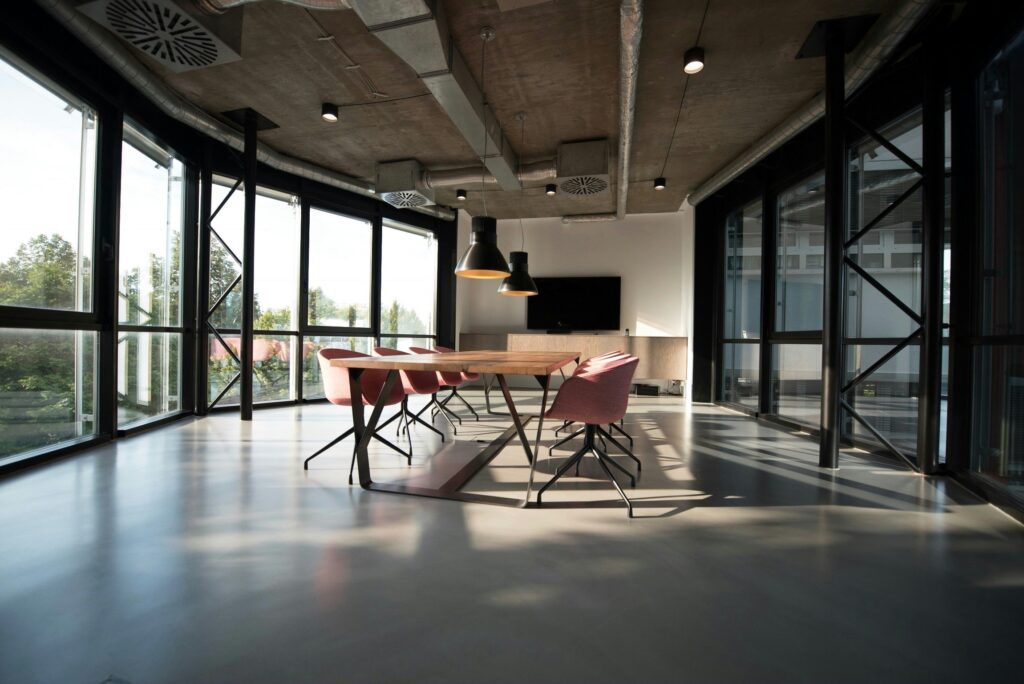
Maintaining clean carpets and upholstery isn’t just a matter of appearance for businesses—it’s about
protecting your investment, ensuring a healthy environment for staff and customers, and supporting
your brand image. When it comes to cleaning, business owners and facility managers often weigh three
options: DIY, low-cost service providers, or investing in professional commercial cleaning. Here’s how
they compare—so you can make the right call for your business.
DIY Cleaning: Low Cost, High Risk for Businesses
Some businesses consider handling carpet and upholstery cleaning in-house using rented machines or
retail products. While it may seem like a cost-effective solution, DIY cleaning rarely meets the standards
required in a commercial setting.
Pros:
- Lower Upfront Cost: No need to hire a service.
- Flexible Timing: Clean when it fits your schedule.
Cons:
- Not Commercial-Grade: Rental machines lack the suction and power of professional
equipment—meaning dirt, bacteria, and allergens stay behind. - Increased Risk of Damage: Over-wetting or using incorrect products can lead to costly repairs or
replacements. - Takes Staff Away from Core Tasks: Employees should focus on their roles, not on managing
cleaning tasks.
Bottom Line: For commercial spaces, DIY is rarely a viable long-term solution—it’s a temporary fix at
best.
Cheap Cleaning Services: Appealing Price, Unpredictable Results
Budget cleaning companies often promise “professional results” at a fraction of the price. But the
hidden costs and inconsistent outcomes can end up hurting your business more than helping.
Pros:
- Affordable Entry Point: Costs less than premium services.
- Quick Option for Surface-Level Clean: May suffice in low-traffic areas.
Cons:
- Hidden Fees: Add-ons for stain removal, deep cleaning, or moving furniture often inflate the
final bill. - Low-Grade Equipment: Limited extraction means more residue left behind—leading to faster
resoiling. - Lack of Training: Inexperienced technicians can cause damage or fail to meet cleanliness
standards. - Business Disruption: Slower dry times and return visits due to poor performance can interfere
with operations.
Bottom Line: Budget services may cut costs today—but often result in increased downtime, premature
wear, and reputational risk tomorrow.
Professional Commercial Cleaning: The Smart Investment for Business Assets
Engaging a reputable professional carpet and upholstery cleaning company is an investment in your
facility’s longevity, appearance, and health standards.
Pros:
- Deep Cleaning Technology: Removes embedded dirt, bacteria, and allergens that lower-grade
methods miss. - Asset Protection: Technicians are trained to work with high-end furnishings and commercial-
grade materials. - Improved Air Quality & Hygiene: Especially important in healthcare, hospitality, and customer-
facing environments. - Faster Drying Times: Advanced extraction means less downtime and a quicker return to normal
operations. - Predictable Results: Consistency, warranties, and scheduled maintenance plans keep your
facility looking its best.
Cons:
- Higher Initial Cost: But offers measurable ROI through extended asset life and reduced re-
cleaning cycles. - Requires Scheduling: Advance planning is needed—but worth it to minimize business
disruption.
Bottom Line: Professional cleaning is the best option for businesses that value long-term savings,
cleanliness, and operational efficiency.
Final Thoughts: Choose Based on Value, Not Just Cost
For commercial spaces, the cleanliness of your carpets and upholstery reflects directly on your brand.
While DIY and low-cost options may appear to save money upfront, they rarely deliver the depth of
clean or level of protection that a professional service provides.
If you’re serious about maintaining a clean, professional, and healthy environment—especially in high-
traffic or client-facing areas—partnering with a professional cleaning company is the smartest long-term
investment for your business.
